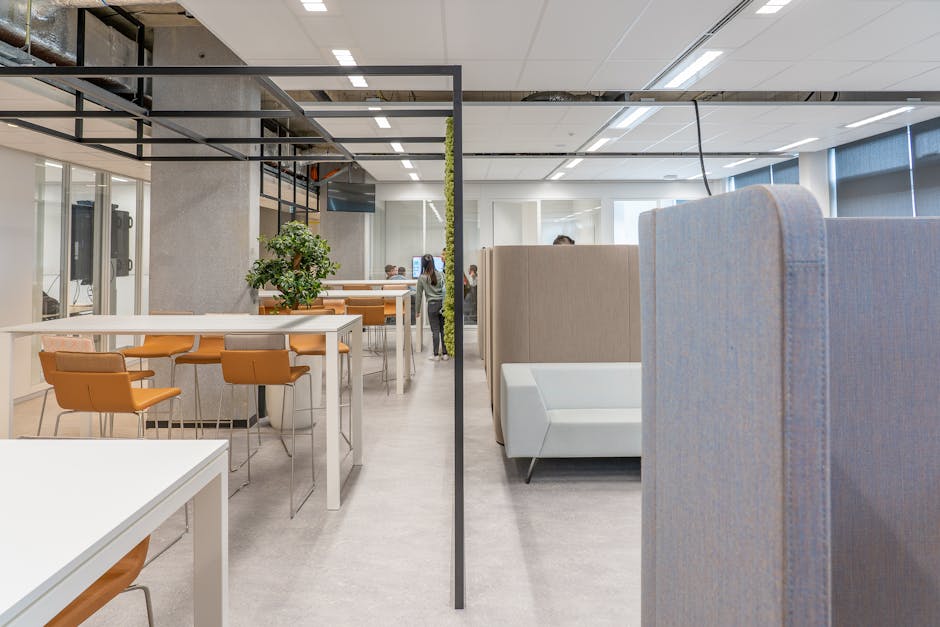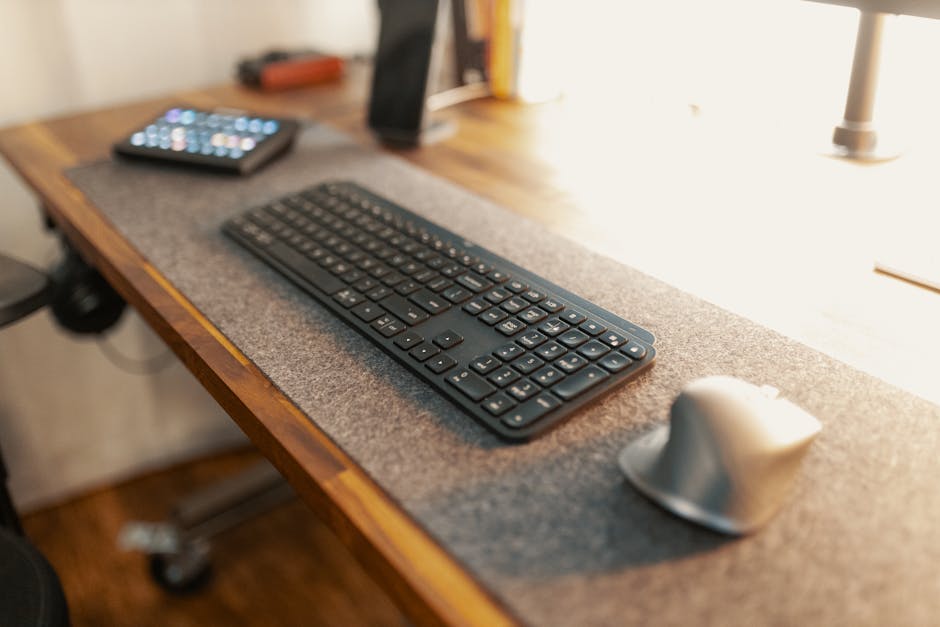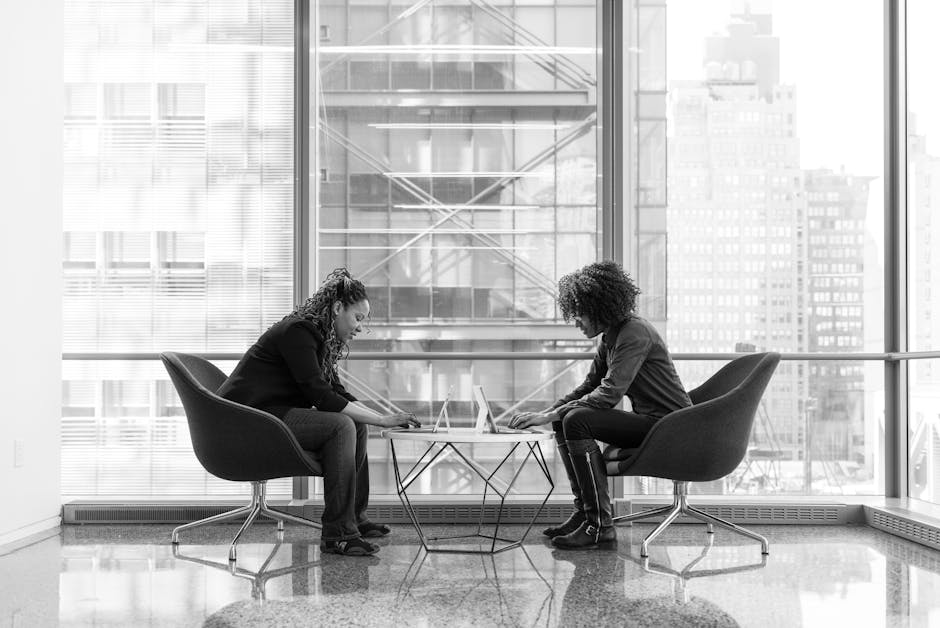How to Design Your Office for Maximum Employee Engagement and Productivity
“Creating an office space that truly works means putting your employees at the center of the design process. This article explores how to design your workplace around the people who use it daily, from understanding work patterns to creating inspiration and gathering continuous feedback for ongoing improvements. ”

How to Design Your Office for Maximum Employee Engagement and Productivity
In today's competitive business landscape, office design has evolved far beyond aesthetic considerations. Modern workplaces must support employee productivity, foster collaboration, and reflect company culture—all while remaining adaptable to changing needs. Whether you're planning a complete office relocation or renovating your current space, approaching design with an employee-centric mindset can transform your workplace from merely functional to truly exceptional.

Understanding the Employee-First Approach to Office Design
The most successful office designs start with a fundamental question: How do your employees work best? Rather than following generic trends or imposing a one-size-fits-all solution, forward-thinking companies are recognizing that their greatest asset—their people—should drive design decisions.
Observe Before You Design
Before committing to any design plan, take time to understand how your current space is actually being used. You might discover surprising patterns:
- Are your formal conference rooms sitting empty while impromptu meetings happen in the kitchen?
- Do employees with assigned desks frequently relocate to work in lounge areas?
- Which spaces consistently have the highest occupancy rates?
Companies are increasingly using workplace strategy tools to measure space utilization and gather data on how employees interact with their environment. This approach allows for evidence-based design decisions rather than assumptions.
Creating Spaces That Inspire
Beyond functionality, exceptional workplaces inspire employees and reinforce company values. Consider how your physical environment can motivate your team:
Balance Focus and Collaboration
Today's work requires both deep concentration and dynamic teamwork. Your office should support both modes:
- Quiet zones for focused work with acoustic treatments and minimal distractions
- Collaborative areas with flexible furniture arrangements
- Informal meeting spaces that encourage spontaneous discussions
- Digital and physical tools that support different work styles
Incorporate Elements That Reflect Your Culture
The Barbarian Group, a marketing and advertising agency, famously created an undulating "superdesk" that physically embodied their collaborative approach. While such dramatic statements aren't necessary for every company, finding ways to express your values through design creates a workplace that feels authentic.

Elements that can reinforce culture include:
- Artwork and visual elements that tell your company's story
- Spaces dedicated to your core activities
- Materials and finishes that reflect your brand identity
- Amenities that support your team's specific needs
Involving Employees in the Design Process
Perhaps the most powerful approach to employee-centric design is direct involvement. Digital Ocean's office redesign success stemmed from creating stakeholder groups who provided input throughout the process.
Establish Feedback Channels
Create multiple ways for employees to contribute:
- Form representative committees from different departments
- Host design workshops where employees can react to concepts
- Create visual boards (digital or physical) where ideas can be shared
- Conduct surveys to gather broader input on priorities
This collaborative approach ensures the final design addresses actual needs rather than assumed ones. It also builds investment in the new space before it's even completed.
Implement Continuous Improvement
The most successful workplaces are never truly "finished." Establish mechanisms for ongoing feedback after implementation:
- Regular check-ins about how spaces are functioning
- Simple ways to report issues or suggest improvements
- Willingness to adapt spaces as needs evolve
Key Considerations for Employee-Centric Design
When planning your office design, consider these essential questions:
How Do Your Employees Perform Their Best Work?
Different roles have different requirements. Sales teams may thrive in energetic, open environments, while developers might need quiet concentration zones. Understanding these varied needs helps create a workplace that supports everyone.

What Environmental Factors Impact Productivity?
Research consistently shows that certain elements significantly affect workplace performance:
- Natural light exposure improves mood and energy
- Indoor air quality affects cognitive function
- Noise levels impact concentration and stress
- Temperature comfort influences focus and satisfaction
- Ergonomics prevents physical strain and discomfort
Prioritizing these fundamentals creates a foundation for productivity before adding more specialized features.
How Can Technology Support Your Space?
Modern workplaces should seamlessly integrate technology that enhances rather than complicates work. Consider:
- Booking systems for shared spaces
- Wayfinding tools for larger offices
- Collaboration technology that works intuitively
- Data analysis tools that help optimize space usage
Bringing It All Together: A Framework for Employee-Centric Design
To create a truly effective workplace, follow these steps:
- Observe and analyze how your current space is used
- Engage employees through surveys, workshops, and representative committees
- Identify priorities based on both data and employee input
- Create concept designs that address core needs
- Gather feedback on proposed solutions
- Implement with flexibility for future adjustments
- Measure results through both data and employee satisfaction
- Continuously improve based on ongoing feedback
Remember that the most successful office designs balance multiple considerations:
- Individual focus work and collaborative activities
- Formal and informal interactions
- Physical comfort and visual inspiration
- Current needs and future flexibility
The Bottom Line: Design That Works for People
Ultimately, your office should be a tool that helps your employees do their best work. By putting their needs at the center of your design process, you create a space that not only looks impressive but genuinely enhances performance, satisfaction, and retention.
As companies navigate the evolving landscape of work, those that create thoughtful, employee-centric environments will have a significant advantage in attracting and retaining talent. The investment in understanding how your specific team works best will pay dividends in productivity, creativity, and workplace satisfaction for years to come.

By focusing on promoting wellness in the workplace and creating spaces that truly support your team's work patterns, you'll build an office that employees are proud to work in—and that helps your organization thrive.